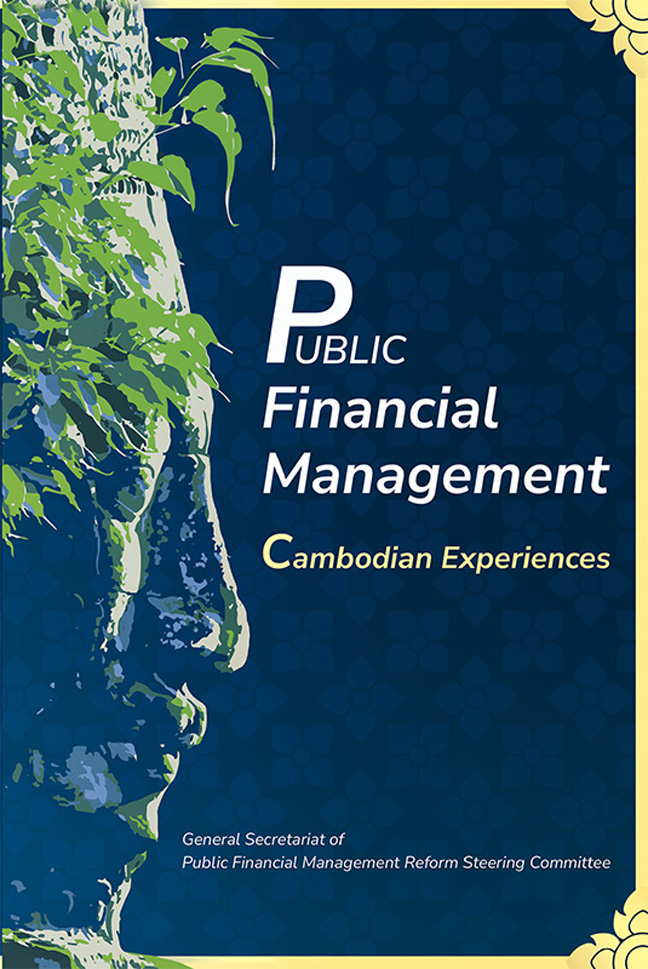Book contents
- Frontmatter
- Contents
- List of Figures
- List of Tables
- Foreword
- Preface
- Acknowledgements
- Notes on the Author, Editors and Contributors
- Abbreviations
- Chapter 1 Introduction
- Chapter 2 Overview of Cambodian Economy and PFM Reform Program
- Chapter 3 Strategic Planning and Budgeting
- Chapter 4 Components of PFM in Cambodia
- Chapter 5 PFM System Assessment Tools
- Chapter 6 Case Study
- Chapter 7 PFM Experiences of Selected ASEAN and OECD Countries
- Bibliography
- Glossary
- Index
Chapter 4 - Components of PFM in Cambodia
Published online by Cambridge University Press: 26 March 2024
- Frontmatter
- Contents
- List of Figures
- List of Tables
- Foreword
- Preface
- Acknowledgements
- Notes on the Author, Editors and Contributors
- Abbreviations
- Chapter 1 Introduction
- Chapter 2 Overview of Cambodian Economy and PFM Reform Program
- Chapter 3 Strategic Planning and Budgeting
- Chapter 4 Components of PFM in Cambodia
- Chapter 5 PFM System Assessment Tools
- Chapter 6 Case Study
- Chapter 7 PFM Experiences of Selected ASEAN and OECD Countries
- Bibliography
- Glossary
- Index
Summary
The components of public financial management in Cambodia are: (1) revenue management, (2) public expenditure management, (3) public investment management, (4) public debt management, (5) state property management, (6) public procurement management, (7) public accounting system, (8) FMIS, and (9) control system. This chapter will explain how the PFMRP efforts modernize each component.
4.1 REVENUE MANAGEMENT
Government revenue refers to the money received by a government from both taxes and non-tax sources. Government revenues and expenditures are the two primary components of the government budget and essential tools of the government’s fiscal policy. Without sufficient revenues and proper management of them, the government would not be able to provide adequate public services to its citizens, from fire brigades and police to environmental protection and telecommunications.
Cambodia has achieved significant revenue growth in recent years. However, the recent global COVID-19 pandemic is providing a monumental challenge to the country’s ability to sustain the government’s recent levels of revenue, particularly in key sectors such as tourism and garment manufacturing exports.
4.1.1 Key Objective in Domestic Revenue Mobilization
Strengthening domestic revenue mobilization (meaning revenue generated within the Cambodian economy) has played a key role in transforming Cambodia from a low-income to a lower-middle-income country in 2015. Its role will be even more critical as the RGC works towards achieving an upper-middle income by 2030 and high-income status by 2050. As the country’s income per capita increases, Cambodia’s external financing is expected to be reduced in the medium to long term. This requires Cambodia to work harder to mobilize both short- and medium-term revenue to achieve high economic growth and maintain a robust economic system that is sustainable, resilient to crisis, and responsive to development needs.
The government launched a highly successful Medium-Term Revenue Mobilization Strategy 2014–18, which substantially increased domestic revenue. Through this effort, the share of current revenue to GDP increased significantly from 10.3 per cent in 2004 to 15.0 per cent in 2013 and continued to grow to 22.0 per cent in 2018. This growth rate is even more remarkable in recent years, with an average growth of approximately 1.4 per cent per year from 2013 to 2018 (Figure 4.1).
- Type
- Chapter
- Information
- Public Financial ManagementCambodian Experiences, pp. 57 - 98Publisher: ISEAS–Yusof Ishak InstitutePrint publication year: 2023

